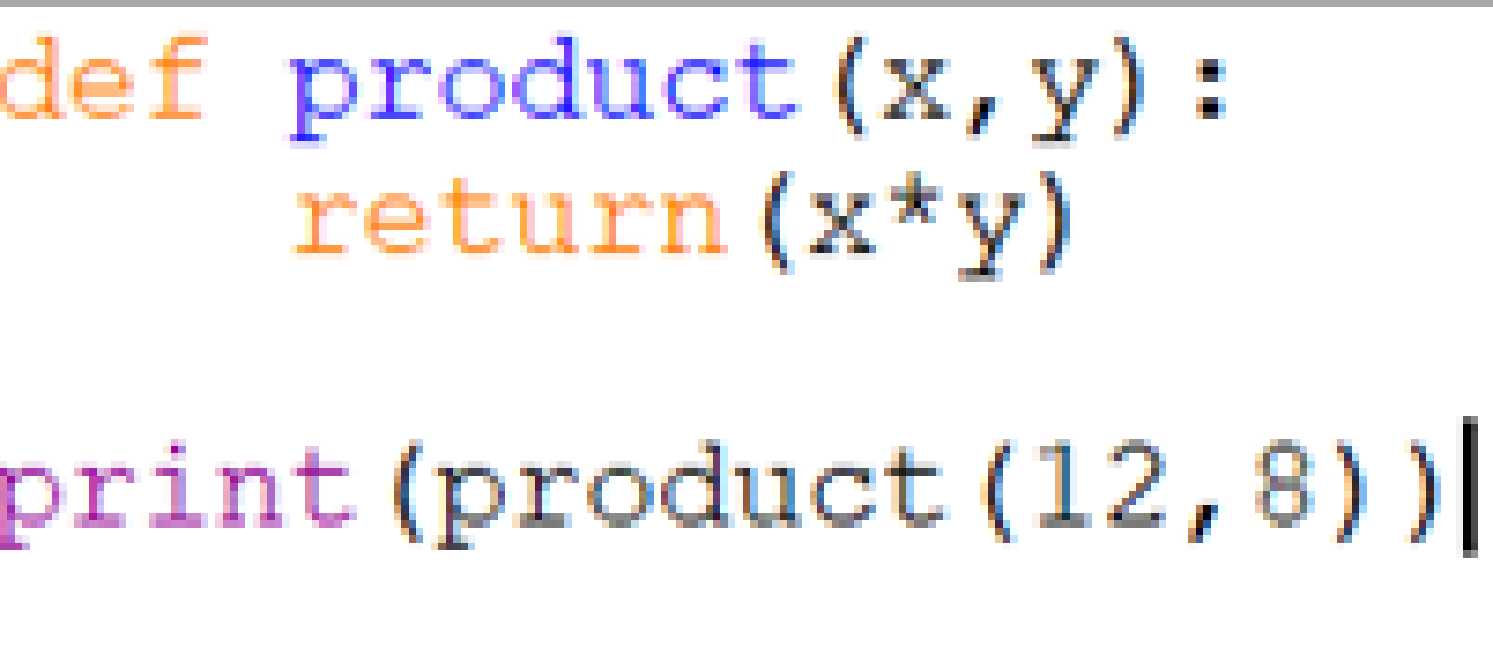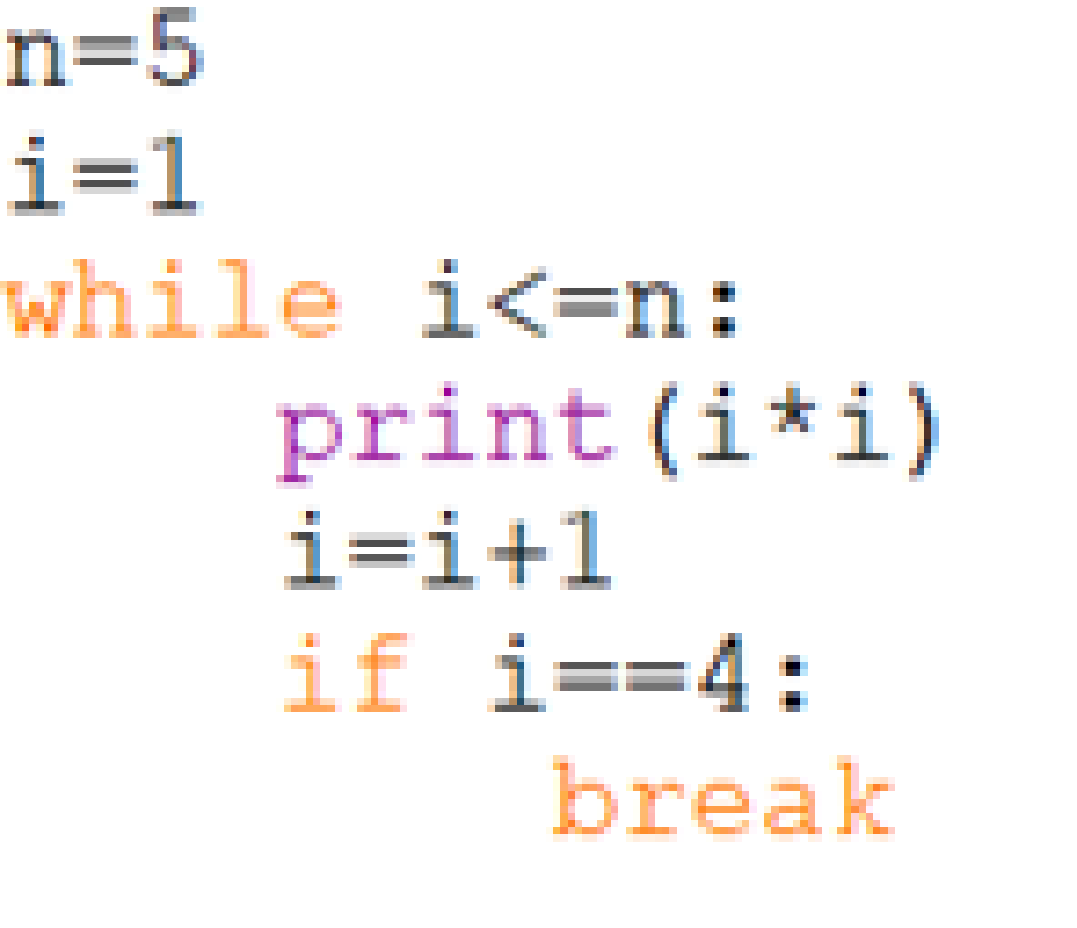1 |
|
CBSE class 8 Python list loop functions solved exercise question answer worksheet Select the correct option. |
|
| Items in a list with five elements will have index from _______. i. 1 to 4 ii. 1 to 5 iii. 0 to 5 iv. 0 to 4
|
| Ans: | 0 to 4 |
|
| The method used to remove an item from a list is _________. i. pop() ii. remove() iii. both i) and ii) iv. none of the above |
| Ans: | remove() |
|
| Each execution of a loop is called _________. i. cycle ii. iteration iii. phase iv. none of the above |
| Ans: | iteration |
|
| The _________ statement is used to go ahead to the next iteration without executing the remaining statements in the loop i. continue ii. break iii. Else iv. stop |
| Ans: | continue |
|
|
|
2. |
| What will be the output of the following code? |
|
| 
|
| Ans: | 96 |
|
|
|
|
|
 |
| Ans: | 1 4 9
|
|
|
|
|
|
 |
| Ans: | > |
|
|
|
3. |
| Answer the following |
| a. | What is the difference between a ‘while’ and a ‘for’ loop? |
| Ans: | The ‘for’ loop in Python is used to iterate over a sequence, such as a list or a string. A ‘for’ loop in Python can also have an optional ‘else’ block. The ‘else’ block is executed when the sequence of items used in the ‘for’ loop gets over. A break statement can be used to exit a ‘for’ before it ends. In such a case, the program ignores the ‘else’ part. The ‘while’ loop in Python is used to execute a block of code as long as the test expression (condition) is true. We generally use this loop when we do not know how many times the loop will execute in advance. You can use an optional ‘else’ block inside a while loop as well. The ‘else’ part will be executed when the condition in the ‘while’ loop becomes False. Similar to the ‘for’ loop, to exit a ‘while’ loop you can use a break statement. In that case, the ‘else’ part is ignored.
|
|
|
|
| b. | What are parameters? What is the purpose of using a parameter? |
| Ans: | A function can accept input data to work on. These are called parameters. For example, int() takes a string value as a parameter. Parameters are specified after the function name, inside the brackets. You can add more than one parameter by separating them with commas. When a function is called, you need to pass the values of the parameters to the function. For example, if you define a function to add two integers as follows.
|
|
|
|
| c. | Ishaan wants to print the multiplication table using a loop. Which loop will he select for the same and why? |
| Ans: | The for loop will repeat for a fixed number of times decided by a counter variable. This variable is incremented or decremented after each iteration of the loop and when it reaches a certain value, it will stop. |
|
|
|
| d. | What is the use of functions in a program? |
| Ans: | Functions help in dividing your program into smaller modules. As a program grows bigger and bigger, functions help to make it more organised and easy to manage. Functions also make it easy to identify and correct errors in a program. It helps avoid repetition of the same code and also makes the code reusable.
|
>>>>>>>>>>>>>>>>>>>>>>>>>>>>>>>>>>>>>>>>>>>>>>>>>>>>>>



Comments
Post a Comment